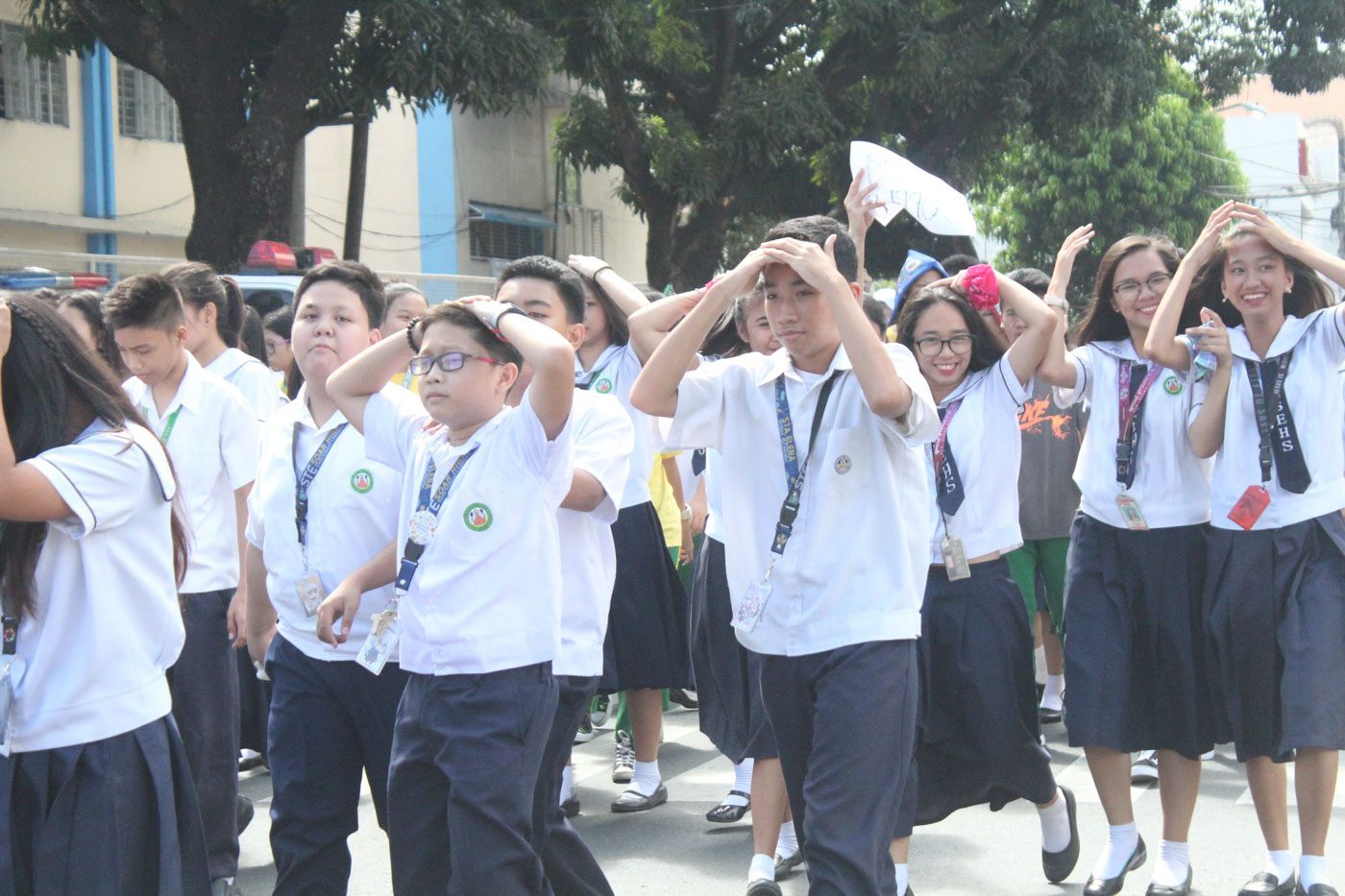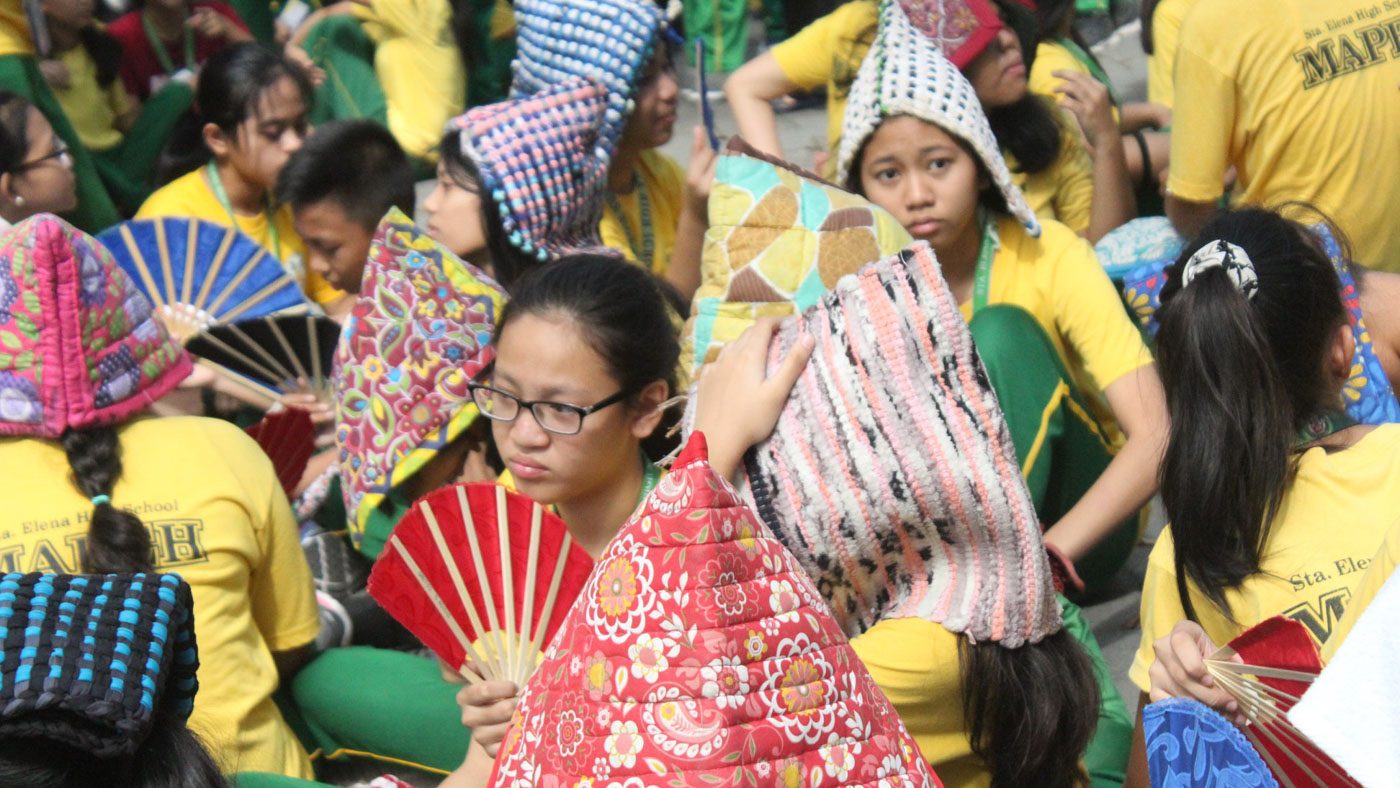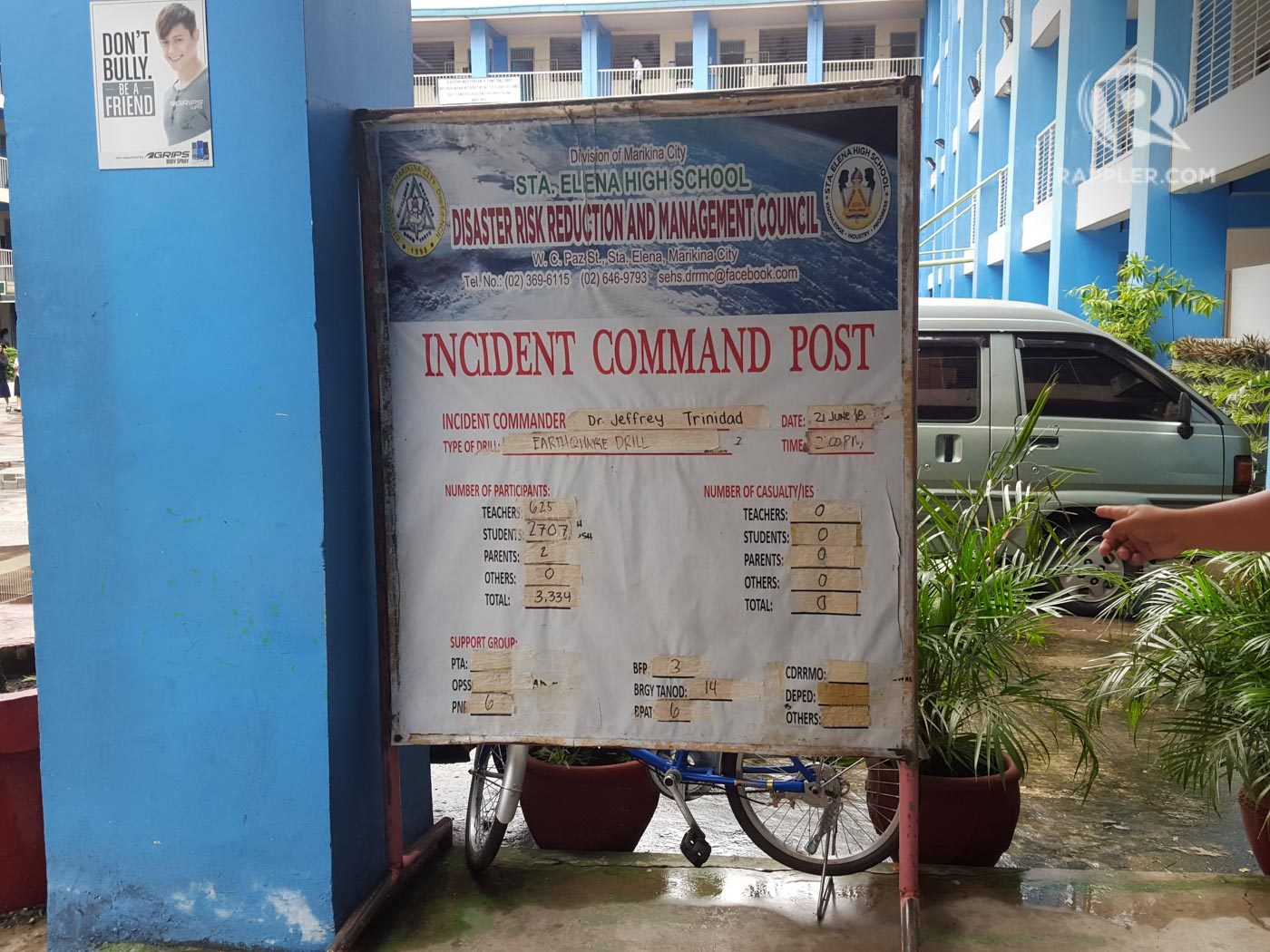SUMMARY
This is AI generated summarization, which may have errors. For context, always refer to the full article.

MANILA, Philippines – How well can you prepare your school for natural calamities in a disaster-prone area?
In 2017, the Philippines ranked third on the World Risk Index, which measures exposure and vulnerability to natural hazards. A country’s vulnerability is measured by 3 factors: susceptibility, lack of coping capacities, and lack of adaptive capacities.
Aiming for disaster resilience, Sta Elena High School (SEHS) in Marikina City has been recognized as one of the public schools with the best disaster risk reduction (DRR) programs. SEHS previously hosted the first-ever nationwide earthquake drill in 2006, and has received awards from different DRR and management councils across the country.
Under the supervision of Hadji Tejada, School Disaster Risk Reduction and Management Council Coordinator, SEHS has boasted award-winning DRR programs that prepare students and faculty for different disasters.
What makes SEHS’ DRR program unique?
Monthly earthquake drills
SEHS conducts monthly earthquake drills, both announced and unannounced.
All students and faculty members participate in the regular drills, where they pass through the designated routes to evacuate to Marikina Freedom Park, wearing makeshift headgear to protect themselves from any debris.
Members of the school’s Batang Emergency Response Team (BERT), also headed by Tejada, help mobilize the students, as well as conduct simulation exercises.
Tejada emphasized the importance of preparing for earthquakes through regular drills, as Marikina is prone to earthquakes, and earthquakes are more difficult to predict.
“Mas madaling [makikita] ‘yung flood. Kaya nakikita nila ‘yun, malalaman, na-a-announce. Unlike sa lindol, wala eh, wala pang announcement diyan, except ‘pag gumalaw na, saka ka [magrerespond]. Kaya, more on preparation kami diyan; kaya nagkakaroon na ng drill,” he said
(It’s easier to predict floods. You can see them, and people can make announcements right away. Unlike with earthquakes, there aren’t announcements for that, except when it actually happens, then that’s when you respond. That’s why we focus on preparing for them; that’s why we have drills.)

When third parties such as members of the Philippine National Police (PNP) or other schools visit SEHS to observe the monthly drills, Tejada always asks them for evaluations and recommendations, either written or oral, and uses them to improve their programs.
“‘Yun ‘yung aral namin. Kung ano /yung nakita mong weakness, ‘yun ang for improvement. Ngayon, ‘yung okay, e ‘di mine-maintain namin (We study [the evaluations]. Whatever they point out as weaknesses, that’s what we keep in mind for improvement. What they point out as okay, that’s what we maintain),” Tejada shared.
SEHS is roughly 1.6 kilometers away from the Marikina West Valley Fault, a 100-kilometer fault that can produce the “Big One” or a magnitude of 7.2 earthquake.
The National Disaster Risk Reduction and Management Council (NDRRMC) conducts nationwide earthquake drills quarterly in order to promote disaster preparedness and resilience.
The Department of Education (DepEd) also mandates public and private schools to hold quarterly earthquake and fire drills, and to prepare certain requirements for the activity.
Communication and dissemination
Tejada said all members of the SEHS community are well-informed on their different DRR measures through different avenues.
Tejada immediately disseminates all announcements on earthquakes, typhoons, and other disasters on the faculty’s Facebook group.
He said that all faculty members are aware of the different DRR plans and programs as they are continually updated during faculty meetings.
The same is done for students during their regular flag raising assemblies, and for parents, during the annual parent orientations.
“Kailangan din magsalita sila para alam nila (It’s necessary that we talk so they’re well-informed),” Tejada said.

For each of their monthly drills and actual earthquakes, a tarpaulin is filled with all the necessary statistics, such as the number of participants and casualties, for easy recording purposes.
Posters with evacuation plans and instructions on what to do during floods, typhoons, and earthquakes are also posted around the campus.
Looking forward
Tejada hopes to improve their facilities for fires, as SEHS currently lacks an adequate number of fire exits and fire hoses. He also hopes that someday, all students would get their own helmets for future earthquake drills.
Tejada hopes the school’s DRR programs will equip all members of the SEHS community with the knowledge and skills to prepare themselves for any kind of disaster.
“Iba nga ang handa, ika nga (It’s good to be prepared, as they say),” he said. – Rappler.com
Gaby N. Baizas is a Community intern at Rappler, and is an incoming senior at the Ateneo de Manila University. She is an AB Communication major under the journalism track.
Add a comment
How does this make you feel?
There are no comments yet. Add your comment to start the conversation.